from the Los Angeles Times...
Kermit Love, 91; helped create memorable 'Sesame Street' characters
His design work on one of the most influential television shows in history made him a partner in the early education of generations of children.
By Jocelyn Y. Stewart, Los Angeles Times Staff Writer
June 26, 2008
After years of designing costumes for ballet and theater, Kermit Love found his way to "Sesame Street."
Working with Jim Henson, Love helped create Big Bird, Mr. Snuffle- upagus and Oscar the Grouch.
The funny-looking creatures became a magnet for preschoolers, pulling them in to watch "Sesame Street," helping them to learn.
Love, whose design work on one of the most influential television shows in history made him a partner in the early education of generations of children, died Saturday of pneumonia in Poughkeepsie, N.Y., said Arthur Novell, executive director of the Jim Henson Legacy, an organization dedicated to preserving and perpetuating Jim Henson's contributions.
He was 91.
Though most adults knew Love for designing characters, children who saw him on "Sesame Street" knew him as Willy the hot dog man.
Love also created Snuggle Bear, the pitch man for Snuggle Fabric Softener.
Long before "Sesame Street" and children's television, Love had transformed his childhood love into a successful career.
Born in Spring Lake, N.J., on Aug. 7, 1916, Love began staging puppet shows while in his teens.
Later he designed costumes for Orson Welles' Mercury Theater and made a name for himself as a marionette maker and a stage and film designer.
For decades he collaborated with some of the greatest choreographers of the 20th century: George Balanchine, Agnes de Mille, Robert Joffrey, Jerome Robbins, Twyla Tharp.
His many ballet credits include the 28-foot marionette for Balanchine's "Don Quixote" in 1965 and the masks for Pulcinella in 1972.
But it was on "Sesame Street" that Love's work found its largest audience.
"Kermit was for 20 years kind of the father to Big Bird," said Caroll Spinney, the performer inside Big Bird who has played the part since the show's inception in 1969. "He was well pleased" with his creation.
The collaboration that led to the birth of America's best-known bird almost did not happen.
After he met with Henson in the late 1960s, Love thought "no two people have less in common."
But Henson, who knew of Love's successful career in theater and ballet, invited Love to join him on the nascent "Sesame Street" project.
Love often explained that he was not the namesake of Kermit the Frog, whom Henson created before the two men joined forces.
The idea for Big Bird was Henson's, but Love's expertise "made the realization of that character possible," said Rick Lyon, who once worked for the Henson Company.
"Frankly a lot of people who design stuff don't really have a working knowledge about how things are made," said Lyon, who designed and built the puppets in the stage production "Avenue Q."
"Kermit had a really good sense of how to engineer something."
Big Bird is a puppet that Spinney steps into. He uses his hands to move the character's head and arm.
Creating a puppet, Love once said, is an organic process, "it simply grows," he said.
Eventually Love used about 6,000 dyed feathers from domestic white turkeys to make the more-than-8-foot-tall Big Bird.
Big Bird is known all over the world, and often Love traveled with him. Once in 1972, Big Bird was scheduled to give a live performance for children on a college campus.
Love and Spinney arrived at the location where they'd stored him to find that college students had ravaged the character, plucking out feathers, and nearly one of his eyes. Love and Spinney were mortified and worked to glue the feathers back in, sew the eye, and perform, Spinney said.
At his New York studio, Love also designed puppets for overseas versions of "Sesame Street," whose casts often feature different characters.
In Israel the cast includes a pink porcupine. For the version that ran in Kuwait, Love designed a Big Bird-like character that was not an animal or a person, but a talking shape, said Spinney.
The puppets on "The Great Space Coaster," a children's television show that ran in the 1980s, were Love's designs, and he also had a public television puppet show called "Whirligig."
"The scope of Kermit's work is truly astonishing," Lyon said. "He had such a diversity of output."
Frustrated by the more narrow scope of projects at Henson Company, Love often pressed them to do more productions for adults, Lyon said.
Though born and raised in New Jersey, Love spoke with a British accent. He looked enough like Santa Claus to portray him on the cover of New York magazine.
"He was a mentor to so many young people in" puppetry, Spinney said. "He would spot children on the subway and say, 'Madam, we could use your child on "Sesame Street.'"
Love also helped jump-start the career of Kevin Clash, the performer who plays Elmo. Clash's portrayal made the character a hit.
Though he had no children of his own, Love said in a 1991 Newsweek article he had "raised so many people's families.
"I have a million children."
http://www.latimes.com/news/obituaries/la-me-love26-2008jun26,0,1027932.story
 Welcome to the Muppet Central Forum!
Welcome to the Muppet Central Forum!
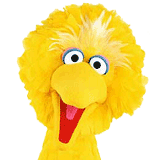 Sesame Street Classics on YouTube
Sesame Street Classics on YouTube
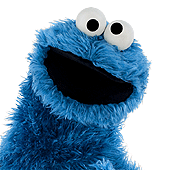 Sesame Street debuts on Netflix
Sesame Street debuts on Netflix
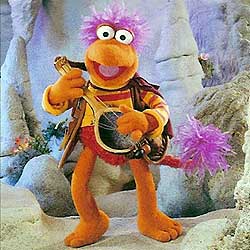 Back to the Rock Season 2
Back to the Rock Season 2
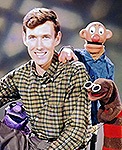 Sam and Friends Book
Sam and Friends Book
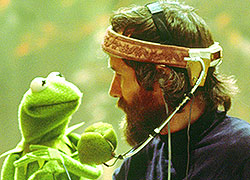 Jim Henson Idea Man
Jim Henson Idea Man
 Bear arrives on Disney+
Bear arrives on Disney+
 Very sad news, He was just as much a part of Big Bird as Carroll Spinney is, it's good to know that Kermit Love lived a long life to see how his puppets evolved and continued to be a part of peoples lives every day.
Very sad news, He was just as much a part of Big Bird as Carroll Spinney is, it's good to know that Kermit Love lived a long life to see how his puppets evolved and continued to be a part of peoples lives every day.



